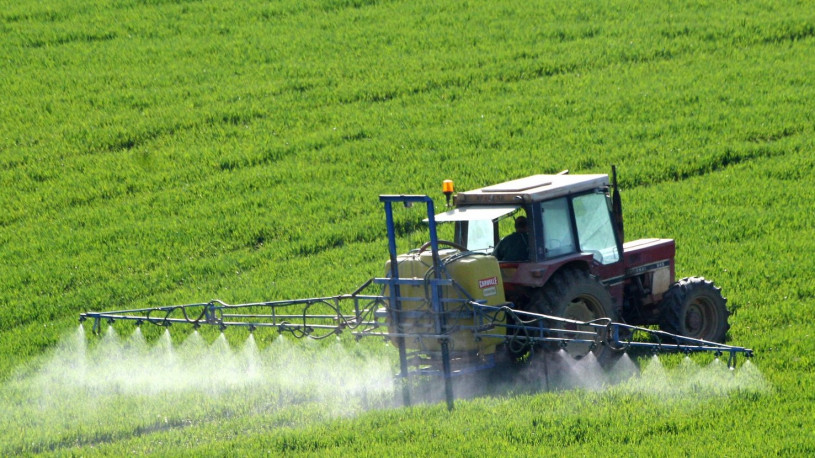-
Should Growers Focus Less on Fertiliser and More on Limiting Surface Run Off?
 Continue Reading
Continue ReadingResearchers at Kansas State University are changing the way that they study the effects of fertiliser on crop yields, and asking if agrichem companies shouldn’t be doing the same.
For now, the research is still in its infancy, but it has been common knowledge that millions of dollars worth of fertiliser and acres of land is wasted every year by the damage caused by surface run off. The researchers hope that by having a better understanding of what causes this erosion and water flow, land management systems could be improved. As Aleksey Sheshukov, assistant professor of biological and agricultural engineering says, “We are trying to learn about what causes ephemeral gullies [the tracts of land that look like small river beds] and how to prevent them.”
But as Sheshukov admits, the hardest part of the study is the great differences from one field to the next. “We are beginning to assess those practices, but because of the differences in geography and soil and other factors, we haven’t developed complete strategies yet.”
Work is progressing however, as the study analyses water movement and its affect on soil particles. Various methods of restricting water flow, such as making the sides of the gully less steep, double-cropping in the gully, or creating artificial swales have so far been tested. Computer models are then constructed to see which reduce sediment loads the most and which practises are more effective.
But there is still much work to be done, as Sheshukov explains, “Overall, there has been a lot more exposure recently to this problem, so I think we are gaining a better understanding of the issue. I hope in a few years we will be able to predict with more certainty the reduction rates for a given practice.”
Perhaps most surprising of all, is with so many farmers losing fertiliser from surface run off and losing money from lost growing space, why isn’t more research being done to solve the problem?
-
Why Aren’t We All Growing ‘Carbon-Neutral’?
 Continue Reading
Continue ReadingBack in April 2012, a Canadian company began farming what it called ‘the most carbon-neutral peppers in North America’, by using a clever CO² capture system. The company, SunSelect, is still a successful grower of produce, but after three years of low carbon impact growing, should we be surprised that this idea has not taken off?
The technology behind the method is clever.
At the beginning of the process, waste wood and sawdust from a nearby sawmill are burnt to heat the 40-Acre greenhouse where the peppers are grown. However, the gases released from the burning are cooled in a flue, so that the carbon dioxide can be stripped off via a water-based organic solvent. The CO² is then stored in a buffer tank ready to be applied directly to the plants.
As Victor Krahn, co-founder of ProSelect Gas Treating Inc. that developed the technology said in a press release at the time, “Carbon-free excess vapor is harmlessly emitted into the atmosphere. Meanwhile, the resulting pure carbon dioxide-laden solvent is boiled off to release food-grade CO² gas at the demand of the greenhouse, cooled and administered directly to the plants in a seamless, computer-controlled and monitored process.”
Whilst the grower (SunSelect) remains keen to promote their sustainable initiative, it is both interesting and a little disappointing that consumers are not more eager to buy carbon-neutral food. Aaron Quon, one of the directors at parent company Oppenheimer, believes that the process “can serve as a powerful point of differentiation” from other growers. Meanwhile the SunSelect website proudly promotes the system, by stating that, “This process only releases the same amount of CO² into the air that would have been released when the plant decomposed naturally.”
But the question remains, why haven’t more growers adopted such an advantageous system?
-
How Do You Make Cheaper, Greener Silicon from Rice?
 Continue Reading
Continue ReadingA major breakthrough has been made in the process for manufacturing silicon. Not only does the new method use less energy (with potential cost savings of 90%), but it has a carbon footprint of almost zero and so has minimal environmental impact.
Since the 1930’s chemists have faced a ‘great challenge’ in how to manufacture silicon with less energy. Whilst the element silicon is readily available in all manner of organic substances, up till now scientists had been unable to efficiently uncouple the silicon from its tight bond with oxygen.
That is until Richard Laine, a professor of materials science and engineering at the University of Michigan discovered how it was possible. He is focusing his further studies on the readily available agrocultural waste of rice hull ash; the burnt remains of the shell that surrounds a grain of rice. As the University noted, “Laine found two easy and inexpensive ways to break that bond: ethylene glycol, or antifreeze, and ethanol, or grain alcohol. The antifreeze combined with a small amount of sodium hydroxide weakens the chemical bonds between the silica and rice hull ash at the beginning of the process, dissolving the silica into a liquid solution. The solution is then heated to 390 degrees Celsius, forming a polymer of silica and antifreeze.
Grain alcohol is then added at the end of the process. It’s chemically similar to antifreeze, so it easily swaps in to replace the antifreeze, which is then recycled. The liquid silica can then be distilled out of this second solution and used to make a high-purity precipitated silica product for industrial use.”
One of the most significant aspects of this discovery is that the basic raw material can be taken from any number of agricultural waste products, as silicon is abundant in most of them, but for now Laine plans to focus on processing rice hulls. Currently, thousands of tons of hulls produced every day are burnt for fuel, however many more thousands of tons are simply dumped as waste. This discovery may make this waste useable.
As a result of this research, Laine was awarded the 2015 Michigan Green Chemistry Governor’s Award and plans to turn his idea into a profitable enterprise. As Laine said whilst collecting his award, “I think eventually, we’ll be producing high-purity silica and other silicon compounds right next to the rice fields. By processing the rice husks we’ll be able to produce high-grade silica in a single location with little or no carbon footprint. It’s really very exciting.”
Questions still remain about the effectiveness of the up scaling and the quality of the mass product that will be produced, but as Laine explains, “If scale up is successful, the process will change the way high purity alkoxysilanes and precipitated and fumed silica are produced worldwide, because there are multiple sources of biogenic silicas everywhere.”
If successful, then clearly Laine’s company will benefit, but who else will? Would you be happy to trade or use a silicon made from rice hulls?
